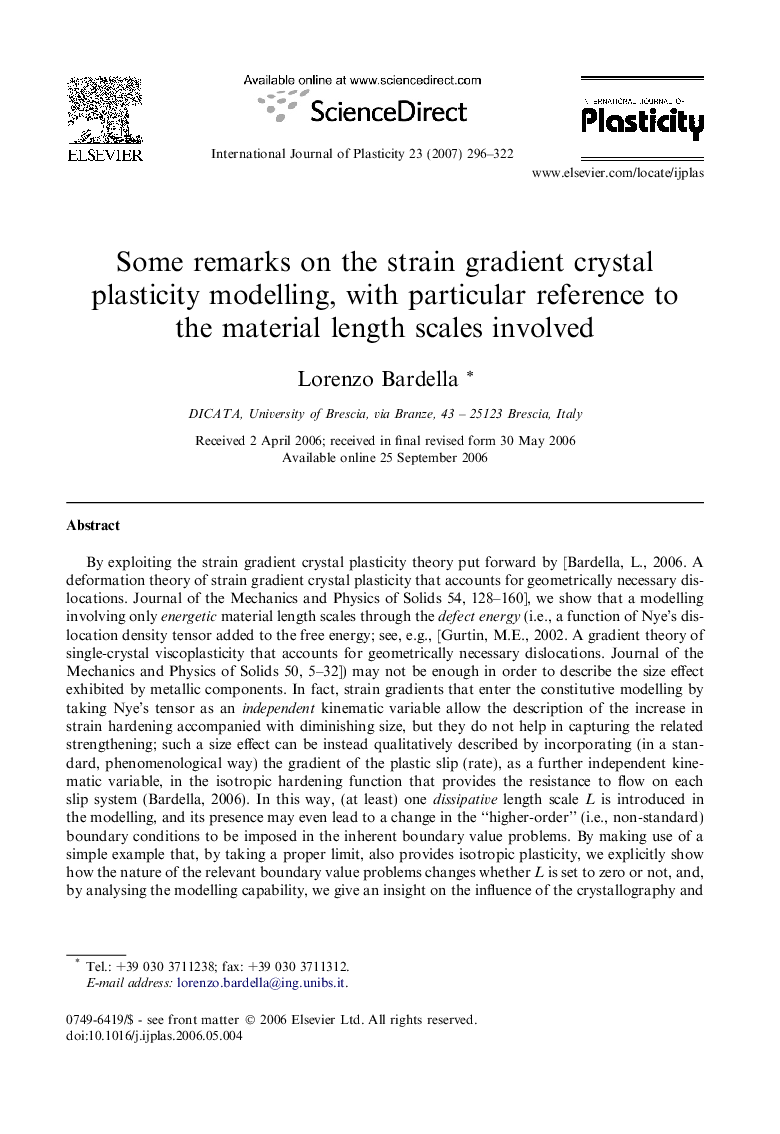| کد مقاله | کد نشریه | سال انتشار | مقاله انگلیسی | نسخه تمام متن |
|---|---|---|---|---|
| 787758 | 1465701 | 2007 | 27 صفحه PDF | دانلود رایگان |

By exploiting the strain gradient crystal plasticity theory put forward by [Bardella, L., 2006. A deformation theory of strain gradient crystal plasticity that accounts for geometrically necessary dislocations. Journal of the Mechanics and Physics of Solids 54, 128–160], we show that a modelling involving only energetic material length scales through the defect energy (i.e., a function of Nye’s dislocation density tensor added to the free energy; see, e.g., [Gurtin, M.E., 2002. A gradient theory of single-crystal viscoplasticity that accounts for geometrically necessary dislocations. Journal of the Mechanics and Physics of Solids 50, 5–32]) may not be enough in order to describe the size effect exhibited by metallic components. In fact, strain gradients that enter the constitutive modelling by taking Nye’s tensor as an independent kinematic variable allow the description of the increase in strain hardening accompanied with diminishing size, but they do not help in capturing the related strengthening; such a size effect can be instead qualitatively described by incorporating (in a standard, phenomenological way) the gradient of the plastic slip (rate), as a further independent kinematic variable, in the isotropic hardening function that provides the resistance to flow on each slip system (Bardella, 2006). In this way, (at least) one dissipative length scale L is introduced in the modelling, and its presence may even lead to a change in the “higher-order” (i.e., non-standard) boundary conditions to be imposed in the inherent boundary value problems. By making use of a simple example that, by taking a proper limit, also provides isotropic plasticity, we explicitly show how the nature of the relevant boundary value problems changes whether L is set to zero or not, and, by analysing the modelling capability, we give an insight on the influence of the crystallography and conclude that it is recommendable that at least one dissipative length scale be always incorporated in the modelling.
Journal: International Journal of Plasticity - Volume 23, Issue 2, February 2007, Pages 296–322